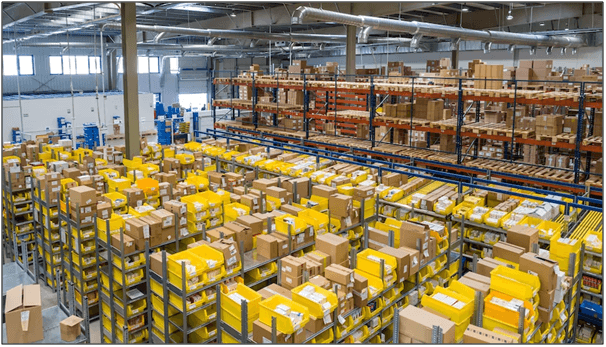In any logistics warehouse, ensure products are stored safely and arrive in the hands of the end-users in intact condition. The success of a pharmaceutical warehouse depends on being equipped with the right processes, and technology, and handling every stage of the supply chain, from storage to picking, delivery, and product recall, with precision and integrity. The right warehouse management system is an essential part of a pharmaceutical company’s supply chain and critical to the success of overall business activities. A well-designed pharmaceutical warehouse can ensure the safe, efficient storage, and handling of sensitive products and temperature-controlled products, while also complying with pharmaceutical industry rules and institutional requirements. In this article, several key factors will be discussed for operating a successful pharmaceutical warehouse operation.

Table of Contents
Warehouse Design and Layout
The design and layout of a warehouse are key to its efficient operation and crucial process as it has a direct impact on efficiency and productivity. In developing warehouse designs and layouts, pharmaceutical corporations face unique challenges due to the nature of their products. Pharmaceutical products are sensitive not only to external contamination such as bacteria or chemicals but also to temperature changes. In some cases, even lighting can damage pharmaceuticals product. When it comes to drugs and medication, traceability is essential for monitoring product expiration dates. Therefore, the pharmaceutical warehouse design should include a designated inventory segregation area where usable, expired, recalled, or returned inventory is sorted.

Appropriate Storage System
In pharmaceutical warehouses, both visibility and traceability of inventory are critical because they manage time-sensitive products such as drugs and medicines. It is important for a pharmaceutical warehouse to select the right racking or shelving system which able to give greater visibility and can be easily disinfected whenever needed. Proper storage of pharmaceutical products is essential to ensure the identity, strength, quality, and purity of the products are not affected. Pharmaceuticals product also must be stored in a way that makes it easy to use a first-in, first-out system FIFO and/or first-expiry, first-out system FEFO this is to better manage the inventory cycle and to keep these critical and expensive products safe from theft and deliberate contamination.
Controlled Temperature
Temperature and humidity are the hottest topics in a pharmaceutical warehouse management system. The medicine or drugs are sensitive to temperature and humidity changes. For example, the effectiveness of drugs such as insulin will be affected under prolonged heat exposure and to maintain the effectiveness of such drugs, the warehouse should to be stored in an ideal temperature and humidity environment. As different drugs have vastly different temperature requirements, it is necessary to have multiple climate-controlled compartments within the warehouse which easily can be managed using system automation. Temperature and humidity control is a part of regulatory requirements for the pharmaceutical warehouse which can with deviation or huge loss to the company if both temperature and humidity are not managed as per the requirement and guidelines.
Pallets Selection
No other industry is more demanding or setting up the requirement for sanitation compared to the pharmaceutical industry. Companies making everything from over-the-counter pain remedies to life-saving cancer drugs are expected to manufacture products with 100% quality for the public. As a result, can see the manufacturers or distributors built around robust processes, which lend themselves to frequent, thorough cleaning and disinfection. In the past, pharmaceutical or distributors did not include pallets as part of the quality control program. As a result of poor-quality pallets, pharmaceutical manufacturers such as Pfizer and Johnson & Johnson, have issued product recalls due to product contamination from wooden pallets. In pharmaceutical warehouses, pallets are used to move and store materials. Two types of pallets are used in pharmaceutical warehouses, namely wooden pallets and plastic pallets.
Warehouse Standard Operating Procedures (SOPs)
SOPs in pharmaceutical warehousing serve many purposes and are as critical as other areas. Every critical process, procedure, and operation must have its SOP it will figure out the details of each activity and function. It is against regulatory requirements for them to be executed or initiated without its SOP in a pharmaceutical warehouse environment. Various standardization and regulatory bodies such as USFDA, EFPIA, and HAS required Standard Operating Procedures (SOPs) as a part of the regulatory requirements. Commercial approval will not obtained without SOPs as part of the approval requirements.SOPs are rigorously tested and verified for accuracy by relevant personnel and prevent deviations from standard results and help prevent failure.SOPs are constantly updated in response to the change in process requirements or due to the latest trend which helps to increase the efficiency of a pharmaceutical process in the most beneficial, effective, and proven way.
The full content is only visible to SIPMM members
Already a member? Please Login to continue reading.


